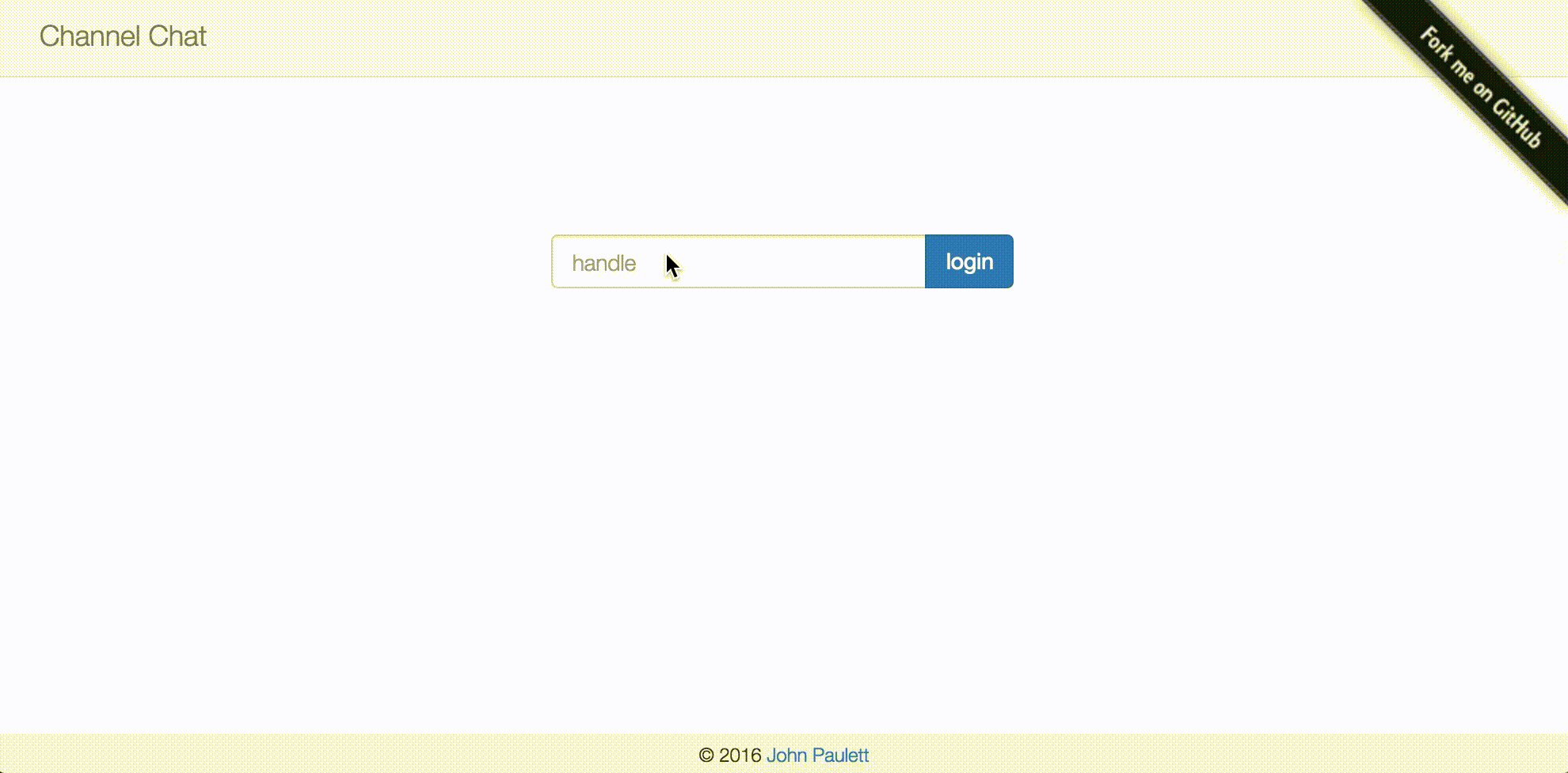Demonstration of a WebSockets-based chat server, utilizing:
- Django Channels
- React and Redux for a reactive client-side application
- Redis as a scalable backend
https://github.com/johnpaulett/channel_chat
A React / Redux frontend application written in ES6, communicates via a
Websocket connection to a Python-based ASGI server. The frontend sends
Redux-style actions as JSON via the Websocket connection, such as
"{'type': 'LOGIN_USER', 'username': 'joe'}". As implemented by Django Channels, the ASGI Interface
Server handles the Websocket connection, passing the message onto a Redis queue
for any available Worker to consume the message. The consumers will use the
Redux-style action to delegate to the appropriate chat.engine.ChatEngine
method (e.g. LOGIN_USER, REQUEST_MESSAGES). The ChatEngine method
typically will perform some database action (lookup user / messages, store
message) and respond to send a response back to one or more Channels,
which the Interface server will read back from Redis and communicate back to
the client via the open Websocket connection. The ChatEngine currently
can send to three types of Channels:
- "Room channels", a
channels.Grouprepresenting anchat.models.Room, in which all clients that are part of that room will receive the message. - The "control channel", a
channels.Grouprepresenting all open socket connections for a specificchat.models.User. - The "reply channel", the specific channel for the current websocket connection.
channel_chat is a functional MVP to test out websockets, Channels, and React, but lacks several key items necessary to make it a production-ready chat application (see TODO). The currently supported actions are:
- Connect - Client connection is immediately upgraded from HTTP to Websocket
- Login - User enters handle,
LOGIN_USERsent to server. Server responds withLOGIN_SUCCESS(see TODO below) and list of rooms (RECEIVE_ROOMS), pre-building the all the "room channels". - Send Message - The user can select a Room, enter text and issue a
SEND_MESSAGEto the server. The server will store thechat.models.Message, then broadcast that message back out to the entire "room channel" via theRECEIVE_MESSAGESaction. Clients, upon receiving theRECEIVE_MESSAGESaction, will update it's Redux state and, if in the room receiving he message, reactively re-render the<MessageList />. This "room channel" abstraction means that all active websockets will receive the broadcast, even if the same user is logged in from multiple devices. - Clients can request message history via
REQUEST_MESSAGES, which is returned via the "reply channel". Several events trigger a message request:- When changing rooms, a room ID is passed, and the last 50 messages are sent (see TODO)
- If the client disconnects and the
ReconnectingWebsocketis able to reconnect, on reconnect, all messages since the last message are requested and returned. - When scrolling back into the room's history, the client will request messages earlier than the first message for that room (see TODO for better infinite scroll).
- Real authentication and then migrate the HTTP session into the Channel session
as part of
ws_connect. - Multi-user rooms. Abstraction already in place for 1 Room to Many Users. Need to ensure controls around who can send to which Rooms.
- "Add Contact" functionality. Currently we inefficiently pre-create 1-1 rooms for every user pair.
- Implement Active / Inactive status flag to show who is online (track via
Control-group ping after User hits
ws_disconnect). - Implement an unread message count next to the
<Room />. - Avoid re-requesting messages for a room when switching between rooms.
- Implement intelligent "infinite scroll" when scrolling back on a room's
history. Basic onScroll has been implemented, but should trigger prior to
scrollTop == 0, should display a loading indicator, and should stay pinned to location of current messages in view. - Better workflow for initial post-login (e.g. user's last open room).
- Implement @handle parsing and linking.
- Implement the Notification Browser API to provide OS-level alerts on new messages.
- Provide message search.
The system has been tested with Ubuntu 14.04, node.js 6.0.3, Python 3.4:
git clone https://github.com/johnpaulett/channel_chat cd channel_chat
Add :file:`project/local_settings.py`, with a SECRET_KEY and optionally
DEBUG:
SECRET_KEY = 'mysecret' DEBUG = True
Continue:
nvm use 6 # assumes using nvm to install node.js 6 make env make static make createdb make migrate make serve
To run the test suites (mocha and Python unittest):
make test

